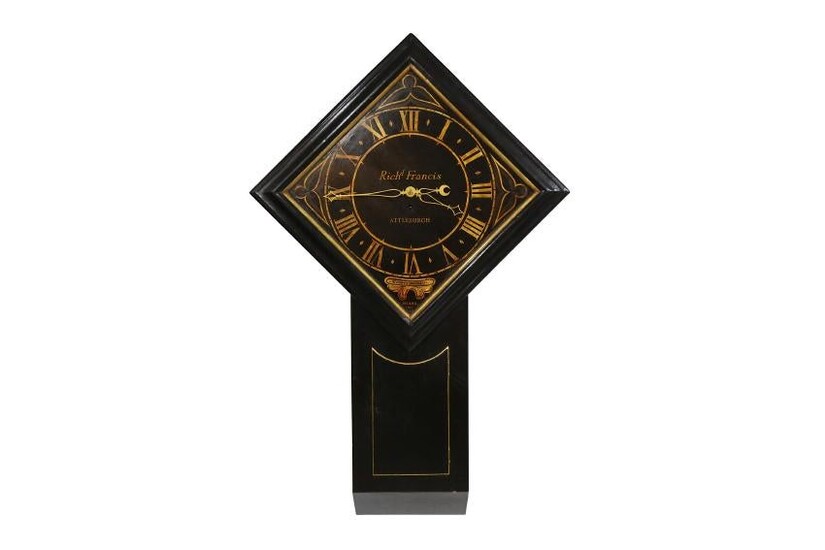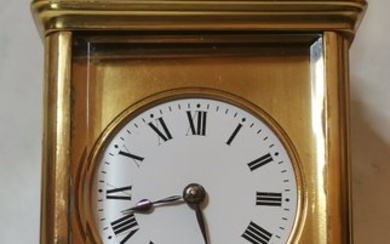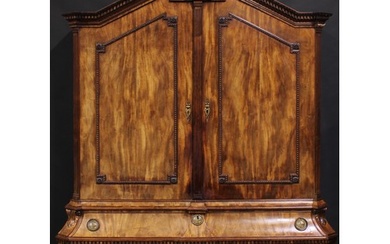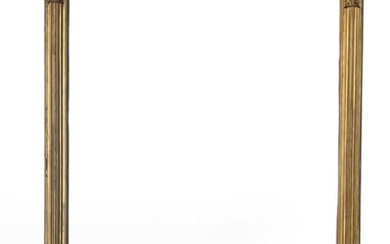A LARGE EARLY 19TH CENTURY ENGLISH TAVERN OR 'ACT OF
A LARGE EARLY 19TH CENTURY ENGLISH TAVERN OR 'ACT OF PARLIAMENT' CLOCK BY RICHARD FRANCIS, ATTLEBURGH, CIRCA 1810
with unusual square dial, painted black with gold Roman numerals, and bearing the marking “Tempus Fugit 1844”, and theoriginal painter’s signature “NIARR” below, with very large gold-painted hands, the minute hand with couterweight for proper functioning and minimum power requirement, the straight painted case with door and lock for access to the pendulum and weight, signed on the dial and stamped on both movement plates 'Richd Francis ATTLEBURGH', with numerous markings of make and painters on the reverse of the dial, the substantial single train timepiece movement with four turned pillars, recoil anchor escapement and steel suspension with large count pinions for accuracy, gutline holding the original weight for an eight day duration, the pendulum beating the second,
152cm high x 96cm wide x 21cm deep
The movement is ticking but not fully tested or guaranteed.
RELATED LITERATURE : G.H. Baillie, 'Watchmakers and Clockmakers of the World', Ronald E. Rose, 'English Dial Clocks',Antique Collector’s Club, 1978.
TAVERN CLOCK HISTORY : As a result of an Act passed by the English Parliament in 1797 tavern clocks were hung in many pubs and taverns throughout the country. The act declared that a tax would be collected on every clock in the realm, and as a result, many private clock owners either hid their clocks or got rid of them, and so had to visit the tavern to obtain the correct time. These clocks were usually of plain functional design, with large faces that were easy to read.
View it on
Estimate
Time, Location
Auction House
A LARGE EARLY 19TH CENTURY ENGLISH TAVERN OR 'ACT OF PARLIAMENT' CLOCK BY RICHARD FRANCIS, ATTLEBURGH, CIRCA 1810
with unusual square dial, painted black with gold Roman numerals, and bearing the marking “Tempus Fugit 1844”, and theoriginal painter’s signature “NIARR” below, with very large gold-painted hands, the minute hand with couterweight for proper functioning and minimum power requirement, the straight painted case with door and lock for access to the pendulum and weight, signed on the dial and stamped on both movement plates 'Richd Francis ATTLEBURGH', with numerous markings of make and painters on the reverse of the dial, the substantial single train timepiece movement with four turned pillars, recoil anchor escapement and steel suspension with large count pinions for accuracy, gutline holding the original weight for an eight day duration, the pendulum beating the second,
152cm high x 96cm wide x 21cm deep
The movement is ticking but not fully tested or guaranteed.
RELATED LITERATURE : G.H. Baillie, 'Watchmakers and Clockmakers of the World', Ronald E. Rose, 'English Dial Clocks',Antique Collector’s Club, 1978.
TAVERN CLOCK HISTORY : As a result of an Act passed by the English Parliament in 1797 tavern clocks were hung in many pubs and taverns throughout the country. The act declared that a tax would be collected on every clock in the realm, and as a result, many private clock owners either hid their clocks or got rid of them, and so had to visit the tavern to obtain the correct time. These clocks were usually of plain functional design, with large faces that were easy to read.







